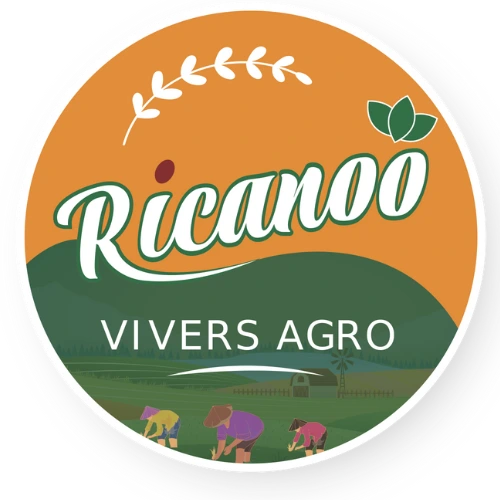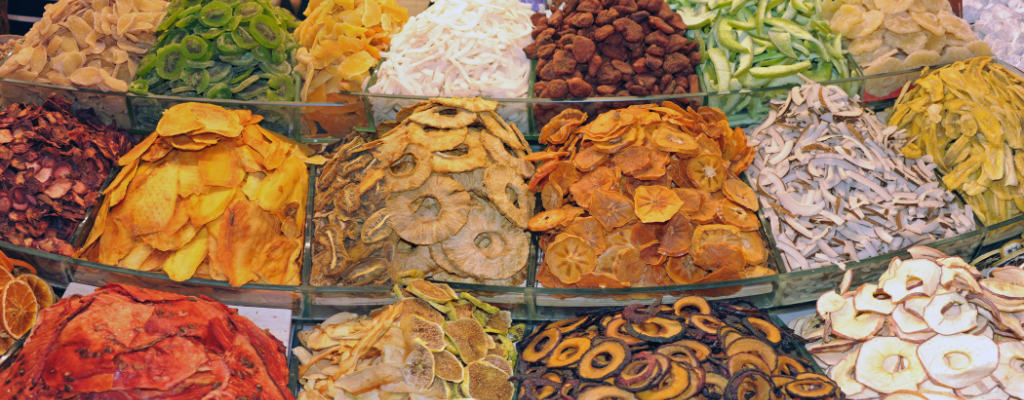From Farm to Table How Dehydrated Vegetables are Made and Why They're Better
When it comes to food choices, the desire for quality, nutrition, and sustainability is more important than ever. Enter dehydrated vegetables, a versatile option bridging the gap between convenience and mindful eating. But what exactly are dehydrated vegetables, and why should they be a staple in your pantry?
This guide dives into the world of farm-to-table dehydrated vegetables. You’ll discover how they’re made, their health benefits, and why they can be a sustainable, practical choice for your kitchen.
The Process of Making Dehydrated Vegetables
The transformation from fresh vegetables to dehydrated forms involves a careful, multi-step process. Here’s how your favorite veggies go from farm to your table.
Sourcing Fresh Produce: It all begins with high-quality, locally sourced vegetables. Farm-to-table practices prioritize fresh, seasonal produce from nearby farms, reducing transportation time and ensuring peak nutritional content.
Cleaning and Preparation: Before dehydration, vegetables undergo thorough cleaning and preparation. This includes washing to remove dirt and pesticides, peeling if necessary, and cutting them into optimal sizes for even dehydration.
Dehydration Methods: There are several dehydration techniques, each designed to preserve the vegetables’ nutrients and flavors as much as possible:
- Air Drying uses circulating hot air to remove moisture gradually.
- Freeze Drying involves freezing the vegetables, followed by removing frozen water through sublimation.
- Sun Drying relies on natural sunlight and is often used for specific vegetables like tomatoes.
Regardless of the method, the goal is to reduce the vegetables’ water content significantly, making them lightweight, shelf-stable, and nutrient-rich.
Packaging and Storage: Finally, the dehydrated vegetables are packed in airtight containers or vacuum-sealed bags. Proper packaging prevents moisture reabsorption and ensures they remain fresh for extended periods.
Nutritional Benefits of Dehydrated Vegetables
One common misconception about dehydrated vegetables is that they lose their nutrients during the process. However, studies by the USDA reveal that dehydrated vegetables can retain up to 90% of their original nutritional value. Here’s how they benefit your health:
- Vitamin Retention: Many essential nutrients, such as vitamin A, fiber, and certain antioxidants, remain intact through dehydration.
- Concentrated Nutritional Value: With water content removed, the remaining vegetable is a nutrient-dense powerhouse. For example, adding a small handful of spinach powder to your smoothie delivers a concentrated boost of iron and vitamins.
- Preservative-Free: Unlike certain canned or frozen vegetables, most dehydrated vegetables are free from artificial preservatives, making them a clean, healthy choice.
Convenience and Shelf Life
Dehydrated vegetables strike a perfect balance for home cooks looking for quality and convenience. Their extended shelf life and lightweight nature offer several advantages:
- No Spoilage: Dehydration can extend the shelf life of vegetables to 12 months or more, reducing the waste from perishables that often spoil before they’re used.
- Compact and Lightweight: Ideal for small kitchen spaces or travel, dehydrated vegetables take up minimal storage space and weigh significantly less than their fresh counterparts.
- Instant Availability: Busy weeknights are no match for dehydrated vegetables. With minimal prep needed, you can add spinach powder to a smoothie or stir dehydrated bell peppers into an omelet within minutes.
Versatility in Cooking
One of the best features of dehydrated vegetables is their ability to elevate a variety of dishes. Here’s how you can incorporate them into your meals:
- Soups and Stews: Dehydrated mushrooms add a savory depth of flavor to hearty soups.
- Pasta Dishes: Toss some sun-dried tomatoes into your pasta for a tangy twist.
- Healthy Snacks: Munch on carrot chips for a guilt-free, crunchy snack.
- Breakfast Staples: Add dehydrated bell peppers to omelets or stir-fries for extra color and flavor.
- Smoothies: Boost your morning smoothie with spinach powder for a dose of nutrients.
Their convenience and versatility make them an invaluable ingredient for cooks of all skill levels, inspiring creativity in the kitchen while saving time and effort.
Sustainability and Reducing Waste
Food waste is a growing concern worldwide, with approximately one-third of food produced globally going to waste (FAO). Dehydrated vegetables provide a sustainable solution for environmentally conscious consumers:
- Reducing Food Waste: By extending the shelf life of vegetables, they help prevent spoilage, which reduces waste at a household level. In the EU alone, households are responsible for 53% of food waste, a statistic that could significantly decrease with the use of shelf-stable ingredients.
- Lower Carbon Footprint: Farm-to-table practices and reduced shipping of lightweight, dehydrated products contribute to a smaller carbon footprint.
- Support for Local Farmers: Choosing locally sourced, dehydrated produce supports farming communities while promoting sustainable agricultural practices.
By choosing dehydrated vegetables, you’re not just making life in the kitchen easier; you’re contributing to a more sustainable, waste-free future.
Try Dehydrated Vegetables Today
The magic of dehydrated vegetables lies in their ability to stay nutrient-packed, versatile, and long-lasting while supporting eco-conscious living and local farms. Whether you’re adding sun-dried tomatoes to your pasta or munching on some carrot chips, they fit seamlessly into any lifestyle.
Are you ready to make your meals more flavorful, your kitchen greener, and your meal prep easier? Try dehydrated vegetables today and experience the difference for yourself!




